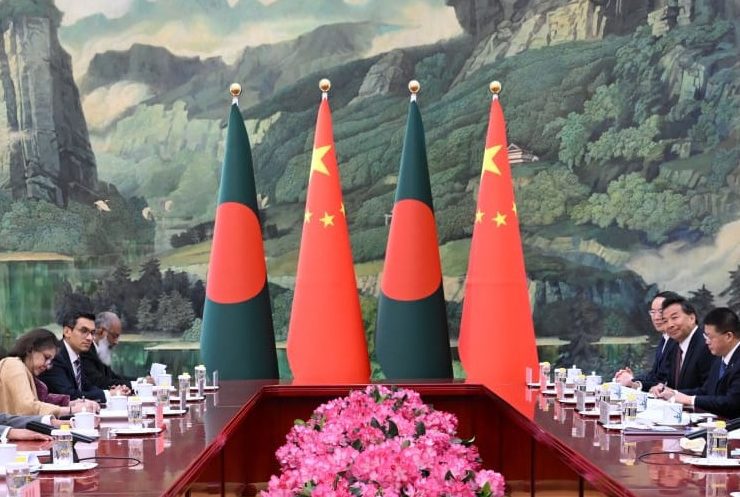by Emdadul Hoque Badal, Dhaka
The recent visit of Bangladesh’s Interim Government Chief, Dr. Muhammad Yunus, to China, and the resulting $2.1 billion in investments, loans and grants, has ignited a complex geopolitical debate. While Yunus’s administration frames the trip as a ‘grand success’, it also casts a long shadow over the already strained relations between Bangladesh and India, particularly in the aftermath of Sheikh Hasina’s ouster. Hasina, who was forced to step down amid a popular student-led uprising in August 2024.
China’s eagerness to engage with the interim government, as evidenced by President Xi Jinping’s pledge to ‘push bilateral cooperation to a new level’, stands in stark contrast to India’s cautious approach. This divergence is amplified by the backdrop of Hasina’s refuge in India, fueling anti-Indian sentiment in Bangladesh. The plain reality is that the new Bangladesh administration seeks diverse global partnerships, moving away from perceived over-reliance on India, a shift exacerbated by the perceived unreliability of US foreign policy under President Trump.
The economic benefits of closer ties with China are undeniable. The Chinese Industrial Economic Zone (CIEZ) and the modernization of Mongla port promise to boost Bangladesh’s infrastructure and manufacturing capabilities. China’s offer of zero-tariff market access also provides an opportunity to diversify Bangladesh’s export portfolio, potentially opening up markets for leather, agricultural products, and textiles. Furthermore, Beijing is considering enhanced cooperation in water resource management and has again pledged to support Bangladesh in its effort to repatriate over a million Rohingya refugees currently living in crowded refugee camps after fleeing persecution in neighboring Myanmar.
However, this economic embrace is a ‘double-edged sword’. Concerns abound regarding the lack of social and environmental safeguards in Chinese investments, as well as the potential for environmental risks associated with large-scale infrastructure projects.
From a geostrategic perspective, the strengthening of Bangladesh-China ties is perceived as a direct challenge to India. The deepening cooperation in areas like port modernization and the potential involvement in the Teesta River project integrates Bangladesh further into China’s Belt and Road Initiative, a project India vehemently opposes.
This proximity of Chinese influence to India’s border is a significant source of anxiety for New Delhi.
Despite the growing Sino-Bangladeshi partnership, Yunus’s administration is acutely aware of the importance of maintaining positive relations with India.
His repeated attempts to engage with Prime Minister Narendra Modi, including a request for a bilateral visit and a subsequent meeting at the upcoming Asian economic summit, demonstrate this awareness. Modi’s recent ‘Independence Day’ letter, though positive, does not resolve the core issues.
The core of the matter lies in Hasina’s presence in India and the perception of India’s continued support for her. The Modi government’s reluctance to address Bangladesh’s extradition requests has deepened the gap. Some political commentators argue, India’s preference for a ‘monopoly’ over Bangladesh’s foreign policy, a privilege enjoyed during Hasina’s tenure, clashes with Yunus’s pursuit of an independent stance.
While Modi’s recent letter may signal a desire for reconciliation, the underlying tensions remain. Yunus’s continued attempts to engage with Modi reflect a pragmatic approach, aimed at navigating the delicate balance between securing economic benefits from China and maintaining essential ties with India. The future of Bangladesh-India relations hinges on whether these attempts will translate into concrete diplomatic progress, or if the deepening Sino-Bangladeshi partnership will further exacerbate the existing strains.


